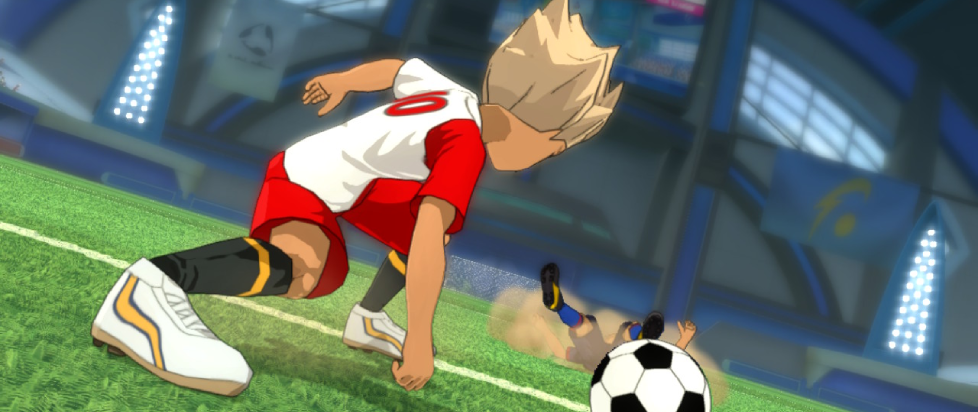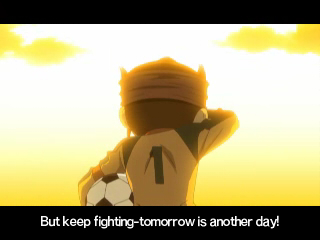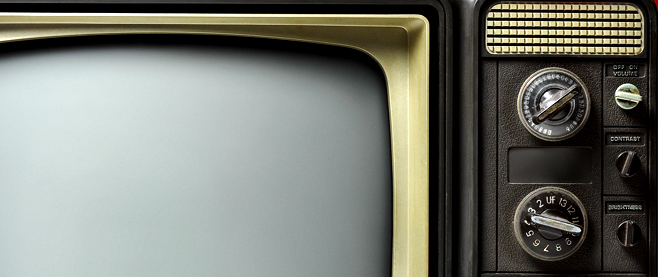
Inazuma Eleven Deserves More Triumphs and Trophies
The first thing we see in Inazuma Eleven is destruction. A ball races for the goal, so fast it physically carves a path in the Earth – the other team never even stood a chance. The announcer proclaims Royal Academy the undefeated champions, and the opposing team’s school is completely demolished. The quest for power that has led Royal here is one that will continue throughout – but I’m getting ahead of myself here. The fact is, you most likely haven’t played Inazuma Eleven. You probably haven’t even heard of it.
Inazuma Eleven originally released in 2008 in Japan, where it was the third best-selling game of its release week. Within a few months, it had an anime airing regularly and a serial manga in CoroCoro Comic. It had action figures, a card game – everything needed to account for a big pop culture boom. But while Inazuma Eleven had that initial boom in Japan – and later Spain – it never reached anywhere near that same popularity in the West.
At a first glance, it’s easy to say this lack of recognition is deserved. Level-5 had other smash-hits in the U.S.: Ni No Kuni, Professor Layton, even Yokai Watch, which launched in the West only a year after Inazuma Eleven and quickly became a fan favorite. If Inazuma Eleven was going to take off, it would’ve. Maybe it just wasn’t good enough.
There was little writing about the game when it first came out in the U.S., and most of what there was wasn’t incredibly positive. Brian Ashcraft for Kotaku wrote that he hated it “with the fire of a thousand burning suns” because it was “just so stupid”, and plenty of others echoed this sentiment. I’m not going to argue with this; Inazuma Eleven is incredibly goofy, and at times, unbelievably ridiculous. But I don’t think that makes it bad. In fact, I wouldn’t count it as a weakness at all.
The core of the game focuses on the Raimon Eleven, a rag-tag soccer team so small they’re at risk of having the club disbanded. Most of the members don’t even care, but Mark Evans, captain and goalie, is full of burning passion for soccer – a passion so deep he won’t let anything stand in his way. Most of the game focuses around building the team up from this low to compete in the national tournament, but what makes it special is the moments in between and the care and depth given to the characters.
The gameplay is fun – it’s basically Shaolin Soccer, but that’s not the reason I keep coming back to Inazuma Eleven. The story itself is still incredibly absurd – though the core is building up your team and getting stronger, there are weirder things throughout: the aforementioned soccer fascists Royal Academy, a team known as Occult which claims to curse other teams during matches, a school called “Otaku” which operates a maid cafe. Zeus Academy, the big final boss team, is made up of players claiming to be gods later revealed to have been on drugs the entire time. It is strange, and this is an unchanging feat of Inazuma Eleven.

As the franchise goes on, it’s become even stranger, from aliens bent on destroying soccer clubs across the country (also later revealed to be on drugs) to more soccer fascism. Inazuma Eleven’s sequel series, Inazuma Eleven Go, even has a game that relies on going back in time through a special bus driven by a sentient teddy bear to acquire the auras of historical figures and beat even more soccer fascists. Go Galaxy brings aliens back for real this time and adds in spirit animals. The third game of the original series has an arms race for World War III and real angels and demons – it’s not a normal franchise by any means.
Inazuma Eleven knows this though, and it’s not trying to be a normal franchise.
For everything weird about it, I can’t stop myself from coming back to Inazuma Eleven. In the midst of the absurd is heart – for every weird alien subplot or time travel conspiracy is hundreds of moments filled with incredible depth.
One of the most important relationships throughout the series is the friendship between Nathan and Mark (or possibly more than friendship, but Level-5 will never give the people what they want). In that first match against Royal Academy, when Mark is getting his ass kicked and isn’t even able to stand, it’s Nathan who takes a ball like a bullet for him and reminds him to keep fighting. After the National Tournament, when Raimon faces the “alien” teams, Nathan begins to feel more and more like he isn’t strong enough to fight, and leaves the team after seeing another player hospitalized. His departure marks the lowest we ever see Mark; it’s the first time he ever “gives up” on soccer. The bonds between characters are what make the experience, and the different ways they all weave together are incredibly complex. It was moments like this that reminded me despite his unshakable hope, Mark was still just a kid – in fact, all of the Raimon Eleven were just kids thrust into situations they were barely equipped to handle. A big part of what makes Inazuma interesting is seeing the different directions this leads into, from redemptions to power struggle.
In this regard, Inazuma wears its heart on its sleeve: “wow Twilight, friendship really is magic!” I think this dorkiness, this willingness to put love and friendship at the forefront is more responsible for the reasons people find the franchise stupid, not the high-powered soccer moves. In a world where believing in other people is often seen as naive, Inazuma Eleven continually dares to hope for the best. Whether it’s in even the worst people we’ve seen finding redemption (I’ll never forgive Akihiro Hino for having adult Jude forgive Ray Dark) or impassioned speeches about how soccer brings people together, Inazuma Eleven isn’t afraid to show what it’s really feeling. And if you suspend your disbelief for a bit, get over how incredibly cheesy it can often be – it’s hard not to get swept up in those emotions yourself. There’s a thorough charm in the hope Inazuma has for the world.
Though the series is incredibly hopeful and spotlights love and care, this doesn’t prevent it from also being incredibly dark. After all, the first thing we see in the show is complete and utter domination, a bleak hopeless sky in the face of real fascists. After Nathan’s departure from the team, he does return – as captain of an enemy team. Once you’ve finally beaten all of Alius, Nathan and all of your former teammates who left due to injuries are back, seduced by the power of the Alius crystal, a magical hunk of comet that gave all of Alius their powers. Nathan, who once threw himself into the line of fire for Mark, is now the one firing those shots at him. There’s intention, and drama, and tragedy here; the tale we’re told is ultimately one about what desperation for power can do to someone.
If you’re willing to see Inazuma Eleven for what it is, there is an undeniable pull to it; more than just seeing the underdogs prevail, you’re experiencing all of the feelings that come with winning, and losing, and having your dreams both crushed and fulfilled in front of you. It’s an affecting thing, to have strength even in the face of extreme loss and hardship.

If not on its own merits, then why did Inazuma Eleven fail outside of Japan and Spain? Part of it could be lack of marketing – again, there were incredibly few pieces written on it during its Western release, and what there was was overshadowed by bigger games. I still remember how I discovered Inazuma Eleven – completely accidentally, huddled over a small ottoman with my brother, watching the Nintendo Direct on my old 3DS. I can only imagine the success it could’ve had if given more showings like this, if Level-5 had really campaigned it as hard as Yokai Watch or Professor Layton.
Inazuma’s failure in the West could also be the fault of a completely unexpected company – Sega. Though the first Inazuma Eleven game released in 2008, in 2009 Sega filed a patent for games controlled on the DS with touch and stylus, and in 2012 they took Level-5 to court for approximately 10.8 million American dollars. Nothing has been heard of the suit since opening remarks in 2012, and Inazuma released in the West in 2014, so it’s been assumed the matter was settled out of court – but it’s not hard to see how this could’ve hindered Inazuma Eleven, between bad press of the lawsuit and any more potential meddling from Sega’s part. If nothing else, it could be the reason the west hasn’t seen an Inazuma game since; copyright has stopped Level-5 before, with Inazuma Eleven Go Galaxy only being released in Japan due to copyright and trademark conflicts over the word galaxy.
In 2020, amidst everything going on in the world, Level-5 quietly shut down all of its North American offices, pulling out entirely. None of their games were selling as well as they hoped. Yokai Watch and Professor Layton still had success, but they were doing poorer and poorer over the years. Like Inazuma Eleven, they waned from the superstardom they once had and became nicher titles.
But before the closure of Level-5’s North American offices, Inazuma Eleven kind of did get the second chance it had desperately needed. In 2018, a new anime titled Ares was made, originally intended to tie in with a game, which brought in a big chunk of new fans (despite being lower quality than the rest of Inazuma’s anime), airing primetime on Disney XD. But then the game meant to tie in with it was delayed over and over again, and Level-5 closed their offices, and nothing was heard of the game for a good while. It seemed like there was no hope for the future of Inazuma Eleven.
Ares, re-titled Victory Road, has kind of been in development hell for a while. It seemed like the devs didn’t know what they wanted it to be. How do you follow up the absurdity of time-travel aura-stealing and space spirit animals? With a return to form for the series? Scratch everything and go back to zero?

Ares was originally going to basically do this, seeing a new group of rag-tag underdogs go to compete in the Football Frontier against our heroes from the original season one, now split up across schools because of, once again, soccer facism. Then Ares was canceled, and announced under a new name, Great Road of Heroes, which was pushed back and became Victory Road of Heroes, and then just Victory Road. Whereas before it was an attempt at returning to the past muddled with the complexity of everything that came before it, Victory Road is a celebration of the past 15 years of Inazuma Eleven.
Little is known about the main story campaign, but chronologically it seems to slot in after the GO series, placing it perfectly within the already existing story. Ares is still here, but it’s a branch in the timeline, an alternate path. Chronicle Mode brings back the time travel from Chrono Stone, this time with the promise you can use it to unite all of your friends from other games and build the strongest team possible. It’s both a reminder and salute to Inazuma’s history.
The beta test demo for Victory Road just released on March 28th, and when I played it, I found myself in an odd position. Because of the way new gameplay mechanics work, brute force and skill isn’t enough anymore. Even if you use the most powerful shots in the series, there’s still a chance of a goalie just stopping it with their bare hands.
Victory Road, at least in the beta phase, does not offer you the ability to immediately be the strongest team ever, even with the best players from across the series on your team. Failure is not only a possibility, but a probability; whatever god complex I got from 100-percenting the earlier games and destroying my siblings in multiplayer is no longer there.
I ended my first demo match at 1-4, a score I haven’t seen since my early days with the first game nearly a decade ago. And I had tried too, tried hard; the match mechanics in Victory Road really draw you in, forcing you to actively play every second, much like a real soccer match. I did my best, but I didn’t have enough tension for all my special moves. I couldn’t stop the other team from stealing the ball, even when I did everything right my goalie failed – there was nothing I could’ve done to prevent it.
Human failure is a part of the game now, and I think it makes it even more beautiful. In real life you can do your best and still fail; natural failures are a part of Inazuma Eleven, but in the past they were always scripted – now they can just happen. And when they do, it’s a reminder to push even harder, to work until you break in search of reaching your goals.
I was reminded of that first goal, the goal that sent the Raimon Eleven on their path to victory; the forfeit that led to their first win even though that had been beaten twenty times over. Inazuma Eleven, at its core, is a game about hope; and I desperately need it to succeed this time around.
———
Quinn Quimby is a Texas-based writer, philosopher, and video essayist. Check out their other work at https://www.youtube.com/@Quimbles/videos




